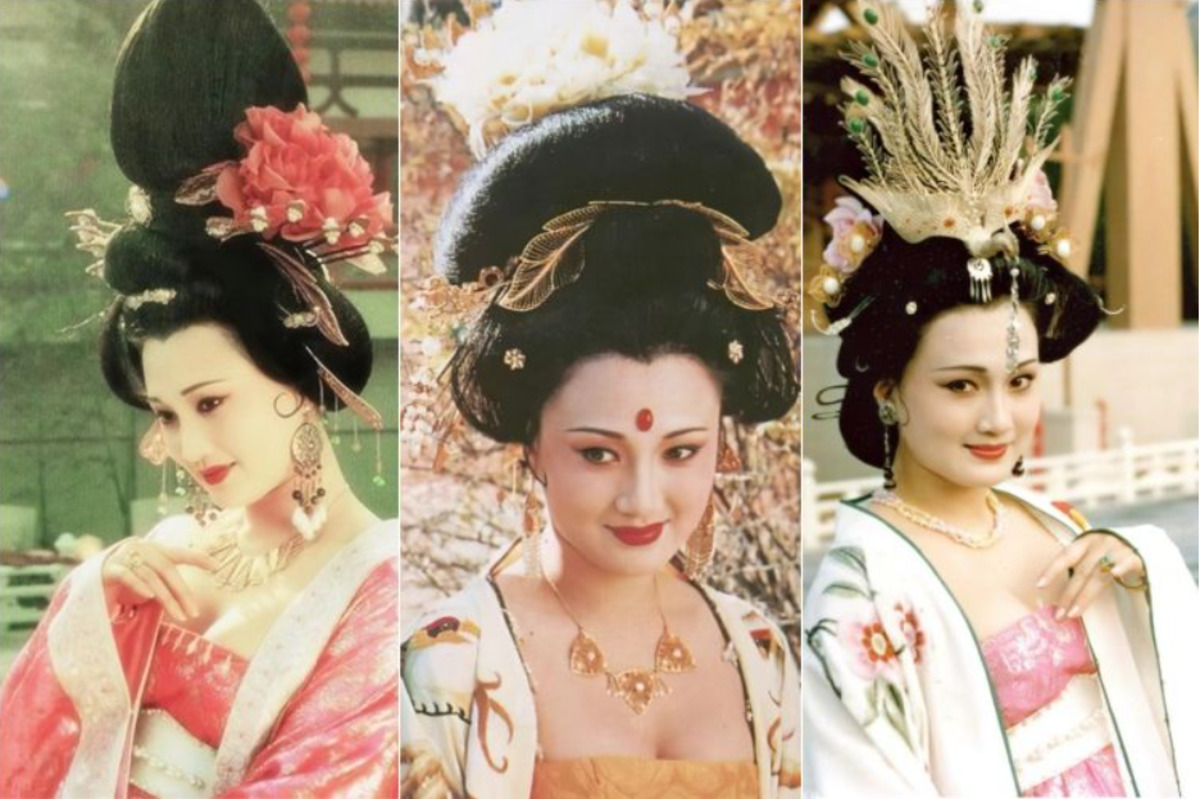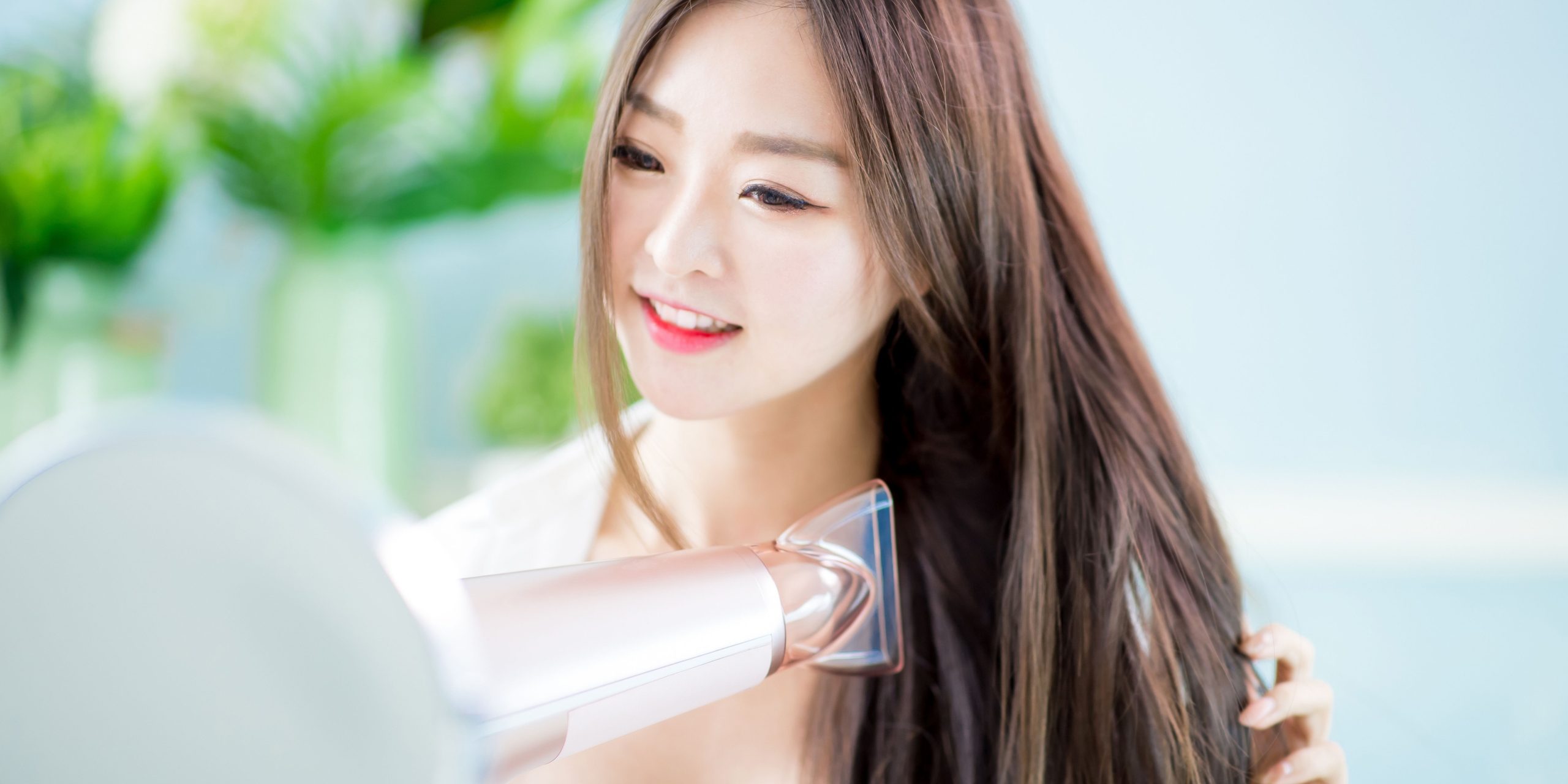The intricately woven cultural history of China includes traditional Chinese hairstyles. These hairstyles have been affected by a variety of things, including social standing, vogue, and historical eras. Chinese hairstyles showcase the craftsmanship and sophistication of traditional Chinese culture, ranging from complex hairpieces embellished with intricate embellishments to simple yet attractive updos. 15 traditional Chinese hairstyles will be covered in this article. This collection provides a window into the interesting world of Chinese hairdressing, whether you’re looking for ideas for a specific occasion or want to learn about historical hairstyles. Head on to a new venture of discovering some historical hairstyles with us!
History Of Traditional Ancient Chinese Hairstyle
Ancient Chinese hairstyles have a rich history that dates back thousands of years. In ancient China, hairstyles served as a medium for not just self-expression but also social standing, cultural values, and even political significance. Chinese hairstyles have been impacted by cultural, social, and political influences throughout history. They served as a marker of someone’s identification, social standing, and adherence to societal rules. Traditional Chinese hairstyles continue to excite and enthrall people with their timeless beauty and historical significance, even if they are not as frequently used nowadays.
Let’s examine how Chinese hairstyles changed over the course of many dynasties:
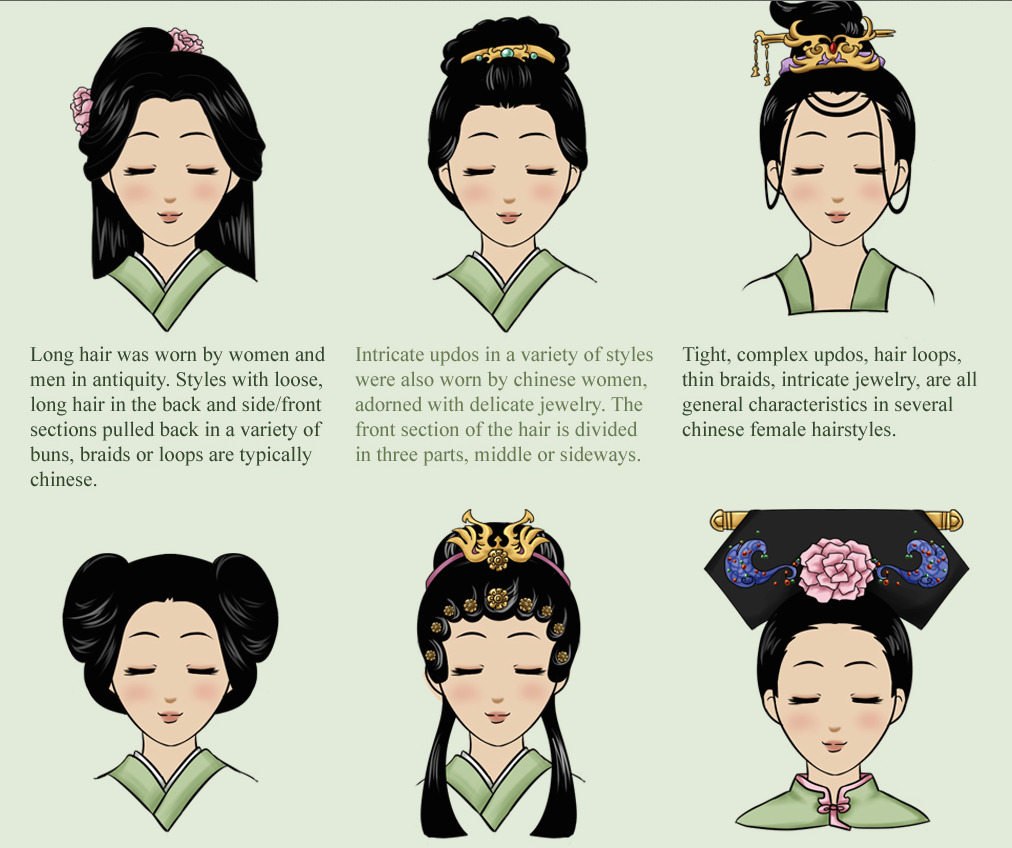
Neolithic Period (10,000 BC – 2000 BC)
Hairstyles of this time were long and free, evoking primitive human culture. The majority of people in China at the time had long hair. Both men and women would frequently keep their hair back or loose. This put more of an emphasis on usefulness than on elaborate trends.
Fact About Chinese Hairstyles: In Chinese history, each kingdom had its own distinctive haircut trends. As societal conventions and fashion trends changed, hairstyles changed from free-flowing styles to elaborate updos.
Xia Dynasty (2070 BC – 1600 BC)
In Chinese history, hairstyling emerged during the Xia Dynasty. Both men and women wore their hair in top knots or braids to represent harmony and order. The plain and utilitarian way of life during the period was probably mirrored in hairstyles. In order to keep it out of their faces, everyone kept their hair reasonably long and pulled back. A typical hairdo for men may have included a loose topknot or a straightforward bun at the rear of the head. Long braids or plaits in the hair were possibly worn by women.
Shang Dynasty (1600 BC – 1046 BC)
Complex hairdos became popular, especially among the aristocrats. Women used hairpins, ribbons, and crowns to accessorize their hair, and it is frequently modeled after legendary or animal beings.
Zhou Dynasty (1046 BC – 256 BC)
Men’s and women’s hairstyles started to become more distinct throughout the Zhou Dynasty. Women had long, flowing hair with elaborate braids and decorations, while men kept their hair up in a bun at the top of the head.
Han Dynasty (206 BC – 220 AD)
The Han Dynasty is frequently cited as the peak of Chinese hair fashion. Women’s hair was frequently adorned with flowers, beads, and ornate hairpins in a variety of intricate updos. Men also sported long hair that was styled in a variety of ways.
Tang Dynasty (618 AD – 907 AD)
The hairstyles of the time are a reflection of the cultural renaissance that took place during the Tang Dynasty. Many women wore thick, curly hair and occasionally added extensions or wigs. The most common hairstyle for men was a simple bun or topknot.
Song Dynasty (960 AD – 1279 AD)
Simple and elegant design became the favored style during the Song Dynasty. Smooth, high buns or braids that were frequently accessorized with elaborate hairpins were the norm for women’s hairstyles. Men’s haircuts tended to be more conservative and well-coiffed.
Ming Dynasty (1368 AD – 1644 AD)
The complexity and elaborateness of hairstyles increased again throughout the Ming Dynasty. Men often had long hair tied into a queue, while women typically had intricate updos with numerous braids and twists.
Fact About Chinese Hairstyles: Traditional Chinese hairstyles were influenced by historical events and cultural shifts. For instance, the severe laws governing hairstyles under the Ming Dynasty were intended to separate social classes and prevent the merging of ethnic identities.
Qing Dynasty (1644 – 1912)
Chinese hairstyles underwent a dramatic change during the Qing Dynasty. The Manchu queue hairdo, which has a long braided ponytail and shaved foreheads, was obligatory for men.
Fact About Chinese Hairstyles: In most Chinese hairstyles, hair was pulled back into a bun and accessorized with lovely hairpieces and accessories as part of a change in women’s hairstyles.
How To Do Traditional Ancient Chinese Hairstyle
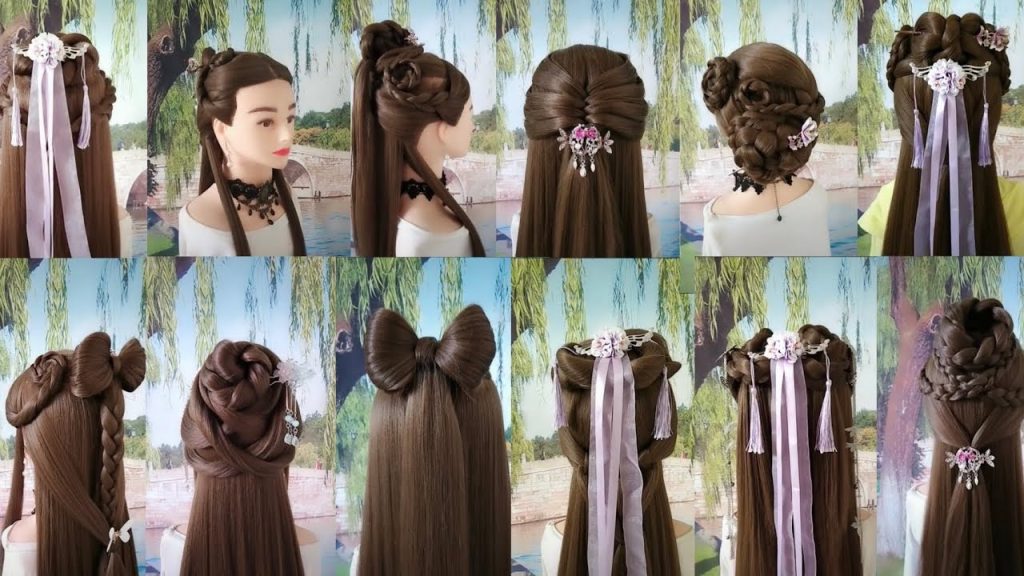
It can be a challenging technique that calls for time and careful attention to detail to recreate conventional ancient Chinese hairstyles. But as you scroll down, you will have a complete overview of how to create a traditional Chinese hairstyle in this article. However, bear in mind that every individual hairstyle may have its own special methods and modifications. For more precise directions, it is preferable to turn to in-depth lessons or ask a professional stylist for help.
The general steps are as follows:
- Getting the hair ready: To make sure that your hair is smooth and manageable, cleanse and condition it. Since sleek, silky hair is frequently used in traditional Chinese hairstyles, you might wish to use a flat iron to straighten your hair if necessary.
- Divide your hair into portions according to the particular hairstyle you want to achieve.
- It can be a challenging technique that calls for time and careful attention to detail to recreate conventional ancient Chinese hairstyles.
- Chinese traditional hairstyles frequently use a variety of decorations, including hairpins, flowers, ribbons, and beads.
- Choose the right accessories for your selected hairdo and carefully position them to improve the overall appearance.
- Don’t forget that traditional Chinese haircuts can be complicated and may take some time to master. If you want to duplicate a certain hairstyle accurately, it can be good to study historical examples, artwork, or pictures.
- To further attain the desired traditional look, getting professional advice or lessons from Chinese hairstyling specialists can offer insightful information and useful techniques.
Fact About Chinese Hairstyles: Proper hair care procedures were necessary for traditional Chinese hairstyles. Natural components like flower extracts or herbal mixtures were frequently employed in hair washing, and various oils and treatments were applied to keep hair healthy and shiny.
15 Traditional Chinese Hairstyles
The rich cultural heritage of China includes substantial representations of traditional hairstyles. The intricate designs and symbolic significance of these hairstyles have been handed down through the centuries. They represent the social standing, vogue, and traditional values of many eras in Chinese history. Chinese hairstyles, which range from ornate headdresses embellished with priceless ornaments to delicate braided styles, are a reflection of the nation’s ingrained traditions and artistic expertise. 15 traditional Chinese hairstyles will be covered in this post, each with its own allure and cultural value. Discover with us the beauty and cultural significance of these time-honored Chinese hairstyles.
1. Binyao
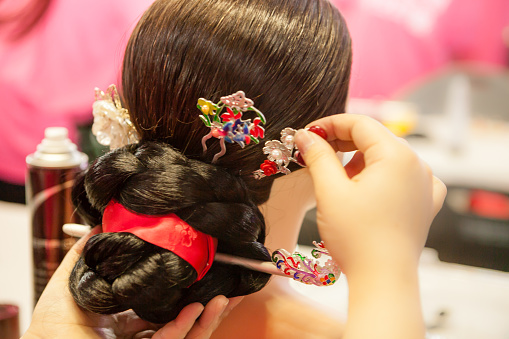
Binyao is a hairstyle from the Tang Dynasty that emphasizes elegance and nobility with a high bun at the top of the head that is frequently accessorized with ornate hairpins and other ornaments.
2. Ji
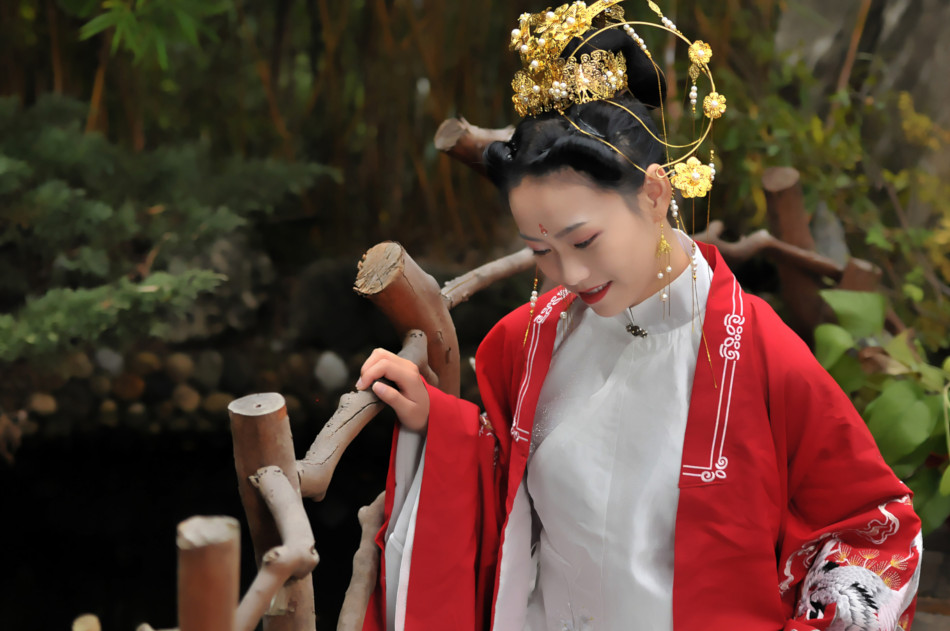
Ji is a hairstyle that was commonly seen in men in ancient China. The front of the head is shaved, leaving the back of the head’s hair long, which is then pulled back into a ponytail. Academics and government officials originally wore Ji as a symbol of their social standing and intelligence.
3. Jiujiu
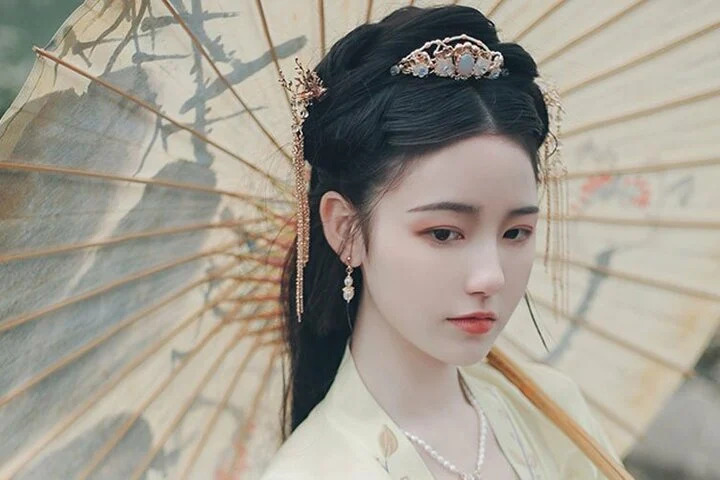
A little girl’s hairstyle features two braided buns on the sides of the head resembling ox horns, and the rest of the hair is styled with ribbons or flowers to represent innocence and playfulness.
4. Daji
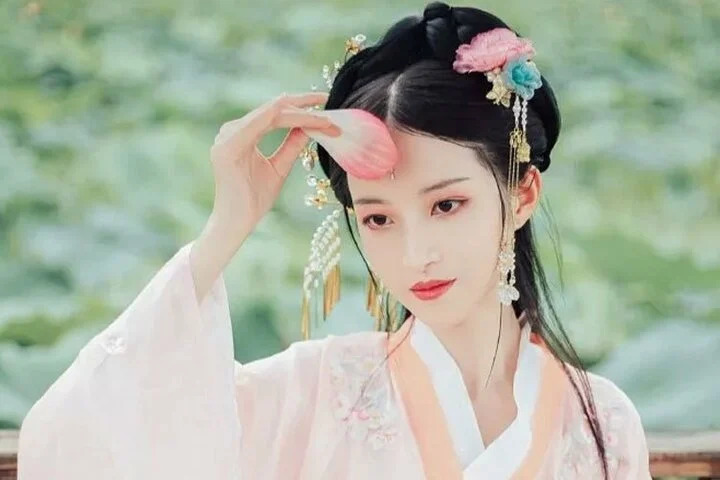
The Song Dynasty saw a rise in the popularity of the haircut Daji. It has a tall bun at the top of the head that resembles a snake coiling. With hairpins or ribbons, the hair is tightly wrapped around the bun’s base. Women favored Daji because it represented their elegance and refinement.
5. Guijie

An elegant and sophisticated formal hairstyle that features a high topknot or bun held in place with ribbons or hairpins and is frequently worn for important occasions and ceremonies
NOTE: Historical developments and societal transformations have shaped traditional Chinese hairstyles. For instance, the severe laws governing hairstyles under the Ming Dynasty were intended to separate social classes and prevent the merging of ethnic identities.
6. Huadian
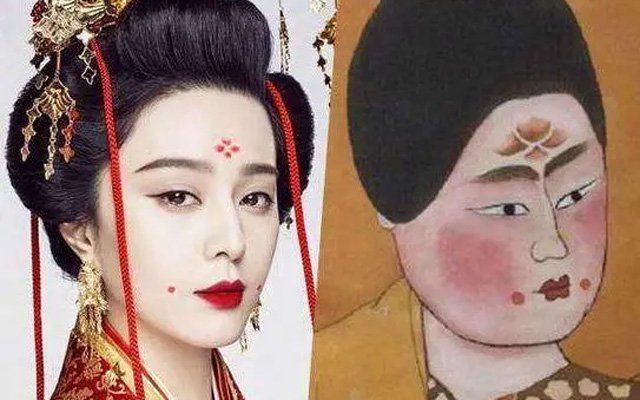
A Qing Dynasty hairstyle with two side buns that resemble blooming flowers and a middle parting that symbolizes femininity and grace. Women’s prominent hair ornaments are the distinguishing feature of the traditional Chinese hairstyle known as Huadian. Usually, the hair is gathered into a bun or coiled form, and a fancy hairpin or comb with elaborate decorations is added to the bun. Huadian was a status symbol for wealth and social standing in addition to being a fashion statement.
7. Tianzi
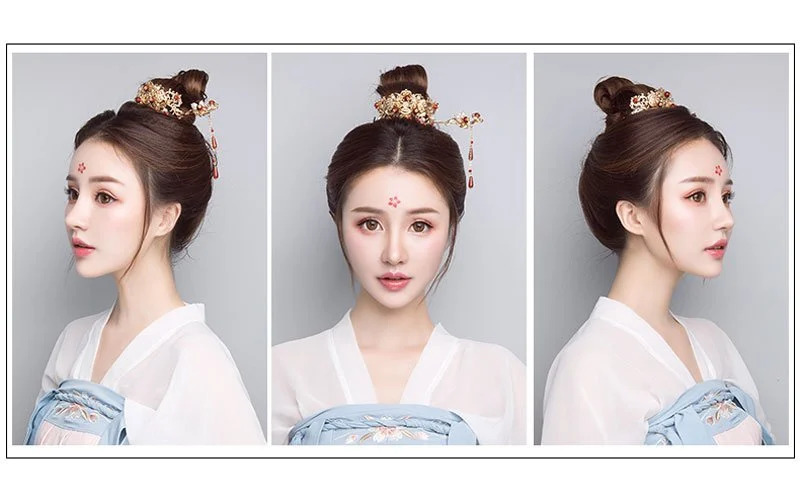
This is an elaborate hairdo that covers the head with numerous tiny buns or loops, demonstrating intricate craftsmanship and artistry. It was frequently worn by noblewomen to denote position and wealth.
8. Yuji

During the Tang Dynasty, women typically wore the Chinese hairstyle Yuji. It has a tall bun that is positioned at the top of the head and fastened with hairpins. The hair is groomed in a way that makes it appear voluminous. Yuji was regarded as a representation of grace and elegance and is frequently accessorized with flowers or other trinkets. It is a hairdo that features two sections of hair wrapped into buns on the sides that resemble the shape of jade hairpins and stand for purity and value.
9. Waiji
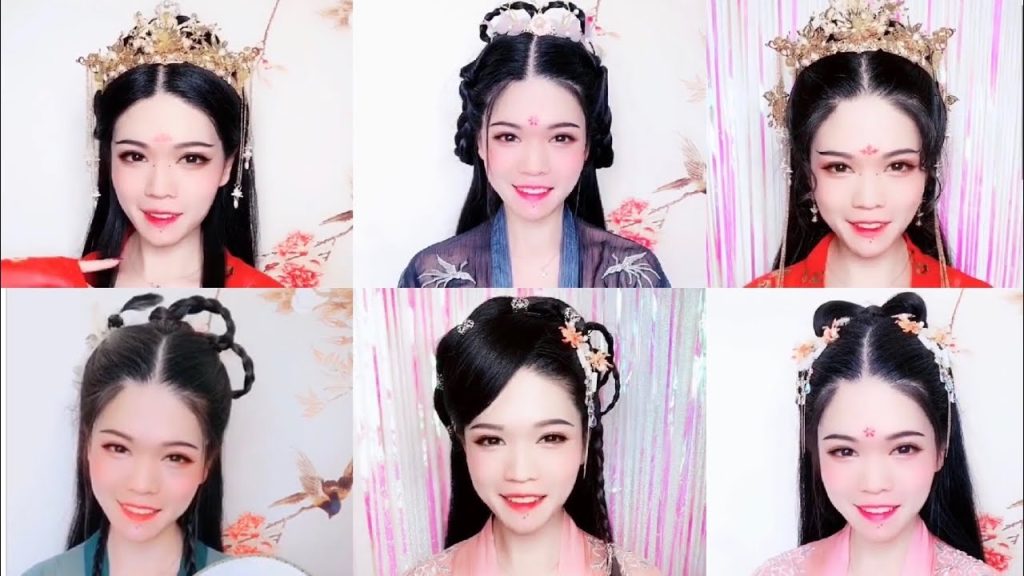
An elegant and refined Song Dynasty hairstyle that features the hair styled into waves or loops on the sides and back and is frequently accessorized with exquisite hairpieces. The Tang Dynasty was known for its Waji hairdo. The hair is divided into two pieces, each of which is firmly twisted before being wrapped over the ears and fastened at the back of the head. The distinctive and elaborate pattern the twisted hair makes lends an air of refinement to the overall appearance.
10. Xiaojie
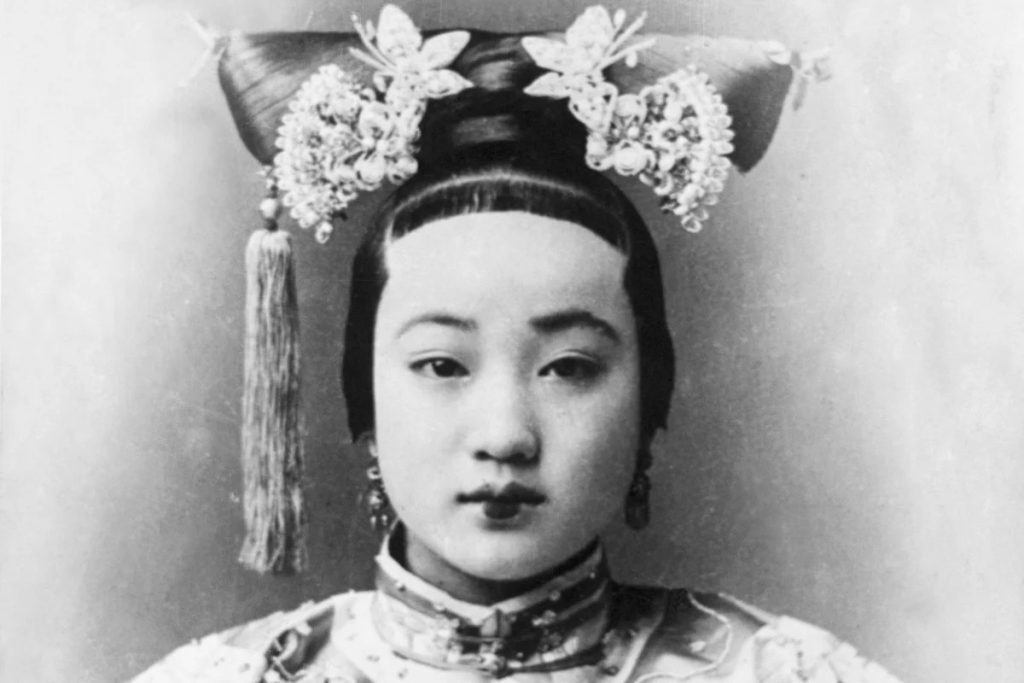
Chinese hairstyle Xiaojie, which means “small knot,” is characterized by a tiny bun placed towards the rear of the head. The hair is neatly coiled into a tight knot and frequently fastened with hairpins. During the Song Dynasty, Xiaojie was a favorite among women and stood for simplicity and grace. One of the simple, elegant hairstyles with a low, flat bun at the rear of the head that is accessorized with ornamental ribbons or flowers.
NOTE: In Chinese history, each kingdom had its own distinctive hairstyle trends. As societal conventions and fashion trends changed, hairstyles evolved from free-flowing styles to elaborate updos.
11. Dajie

Dajie, which translates to “big knot,” is a hairstyle that resembles Xiaojie but has a bigger bun. It signified a more complex and formal style and was also well-liked throughout the Song Dynasty. At the back of the head, the hair was collected into a giant knot, giving the appearance a more prominent and striking one. It is often worn by noblewomen at weddings and major occasions to demonstrate luxury and royalty, with a huge, ornate bun on top of the head.
12. Songjie
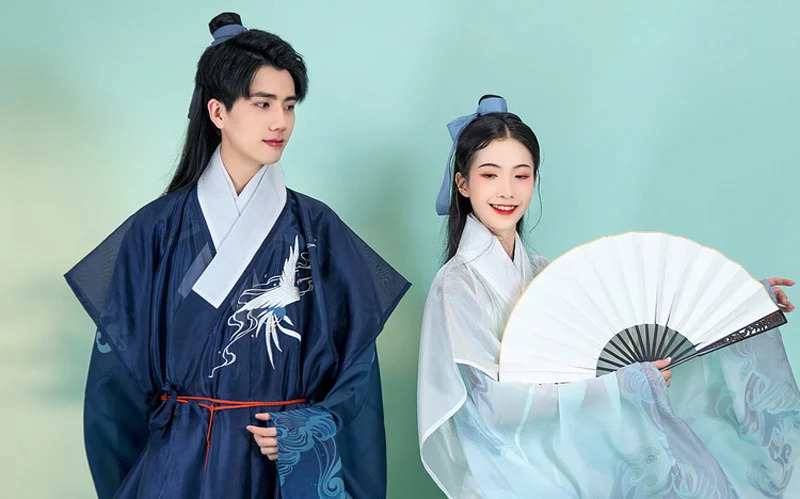
A peaceful and humble aspect is conveyed by this Song Dynasty hairstyle, which has a low bun at the nape of the neck and lose strands framing the face. The Song Dynasty saw a rise in popularity for the hairdo known as Songjie. It has a prominent high topknot at the front of the head that is frequently accessorized with beautiful hairpins or other items. The remainder of the hair is gathered, either left loose or pulled back into a ponytail. Songjie was a symbol of grace.
13. Beijie
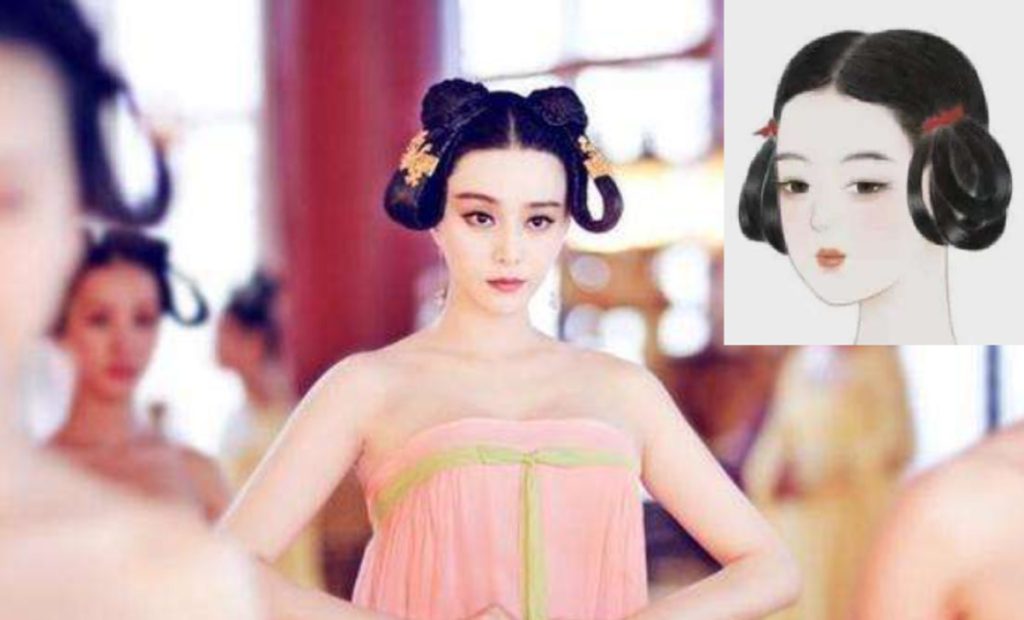
During the Ming Dynasty, women wore the traditional Chinese hairdo known as Beijie. Smoothly combing the hair to the back, it is then tied in a little bun at the nape of the neck. Beijie stood for modesty and humility and was renowned for its simplicity and neatness. It is a complex and charming hairstyle in which the hair is separated into two pieces, twisted or braided, and wrapped around the head.
14. Duanji
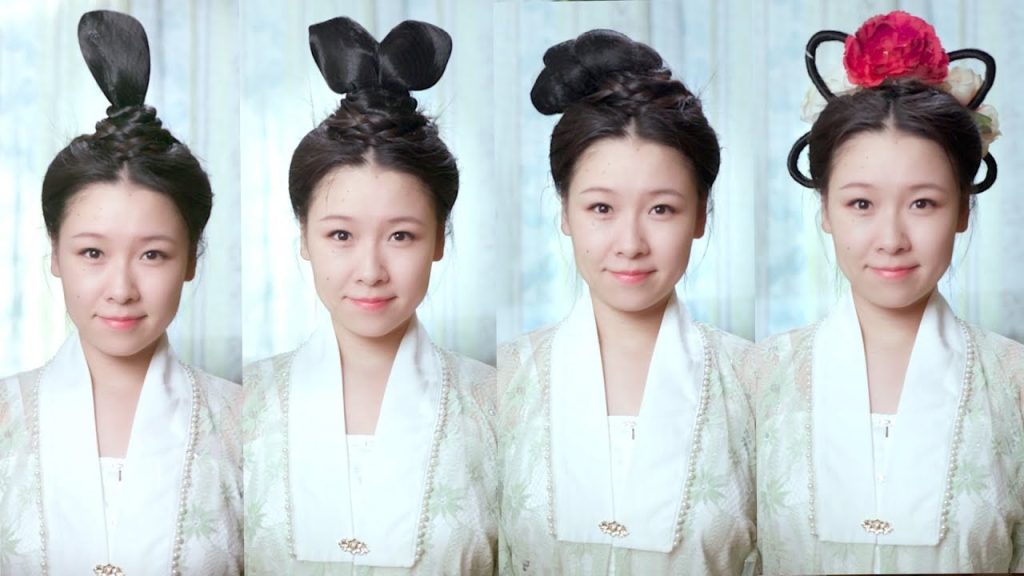
During the Ming and Qing Dynasties, women wore Duanji, a classic Chinese hairdo. The hair is divided down the center, and each segment is braided separately. After that, the braids are wrapped around the head in a circle and fastened with hairpins. Duanji demonstrated complexity and meticulousness, signifying a classy and elegant aesthetic. It is an asymmetrical hairdo that displays balance and accuracy by arranging several little buns or loops in a precise pattern on the head.
15. Jiali

In the Tang Dynasty, women of high social standing favored the hairdo known as “Jiali.” The hair is divided into numerous portions, each of which is then braided separately. After that, the braids are positioned and coiled around the head to produce an intricate and decorative look. Jiali was a symbol of luxury and status recognized for its elaborate braiding techniques.
NOTE: There are many different ethnic groups in China, and each has its own distinctive hairstyle. Ethnic minorities with distinctive traditional hairstyles that express their cultural identities include the Miao, Dai, and Tibetan people.
FAQs [Frequently Asked Questions]
1. Did both men and women use these traditional hairstyles?
Traditional hairstyles varied in that some were reserved for men or women solely, while others were worn by both sexes frequently. For instance, Ji was a haircut for men, whereas Binyao and Jiujiu were generally worn by ladies.
2. Were any particular hair accessories utilized to complement these hairstyles?
Yes, ornate hairpins, combs, flowers, jewels, and decorations were frequently worn with traditional Chinese hairstyles to enhance their aesthetic appeal further.
3. Which materials were most frequently used to make hair accessories?
Traditional Chinese hair ornaments were made from a range of materials, such as jade, pearls, and other gemstones, as well as precious metals like gold and silver.
4. What do traditional hairstyle in China represent?
Traditional Chinese hairstyles frequently represent a variety of ideas, including social standing, grace, modesty, morality, wealth, and the cultural ideals of the era in which they were worn.
5. Which dynasty saw the most popular of these ancient hairstyles?
Hairstyles with traditional Chinese features were common during many historical periods, including the Tang, Song, Ming, and Qing dynasties.
Conclusion
Chinese traditional hairstyles provide a rich and enthralling window into the nation’s cultural heritage. These hairstyles, which range from elaborate updos to sophisticated braids, have withstood the test of time and are still appreciated and imitated today. So grab the one for you because it can be entertaining and enlightening to research and experiment with traditional Chinese hairstyles. Why not assemble a group of friends, pick your favorite hairdo, and enjoy the experience of trying it out on your hair?
You can learn about Chinese culture while interacting with your pals by trying out a beautiful Ming dynasty updo or a stunning Tang dynasty braid. So, embrace the history and beauty of conventional Chinese hairstyles. It’s a beautiful opportunity to honor the past and make priceless memories with the people you love. Take your pals, brushes, and hair ornaments on a hairstyle excursion that will make you feel closer to China’s rich customs.


